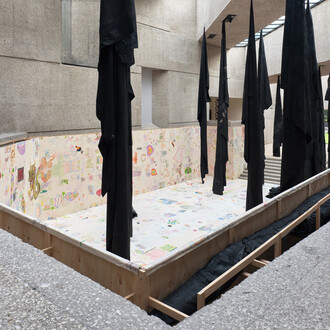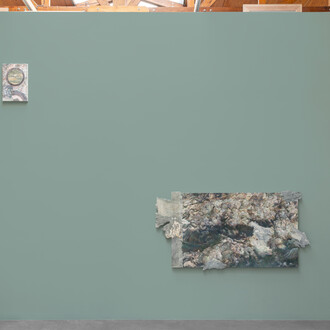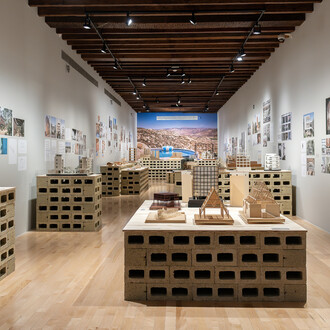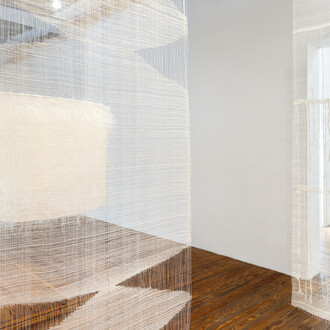Carsten Höller uses his training as a research agricultural entomologist to create dazzling, mischievous laboratories where we are invited to manipulate our own emotional and physical states. Notorious for introducing the elements of play and the uncanny into the institution, as well as disassociation and seclusion within public space, Höller brings the hallucinogenic into contact with civic life. From stories-tall curving slides as departure devices from museums and office buildings, to sensory-deprivation polypropylene tanks that host floating visitors.
For Sunday, his survey at Mexico City’s Museo Tamayo Arte Contemporáneo, his first in Latin America, the artist takes advantage of the museum’s unique architecture—a brutalist building designed as a pyramid in reference to the pre-Hispanic architectural history, located in one of Mexico City’s principal museum districts—to create the site-specific Decision Tubes, a delicate suspended fishtrap-like structure of net and steel, that allows visitors “to wander above solid ground, while constantly confronted with the question of where to go, which direction to take” (Baldo Hauser). The work expands on the Decision Corridors, first shown in 2015 at his Hayward Gallery exhibition in London: meandering pathways where one is both forced to follow multiple curves and turns, while at the same time having to decide which corridor to take, which tube to delve through.
Inverting seemingly straightforward experiences, Höller’s large-scale projects often recall the pleasures of visiting a playground or amusement park. Engaging the familiar with the deceptive, Höller continues, in Sunday, to elevate experiential installations to a transcendent, fleeting sense of momentary psychedelia. An updated version of Höller’s aptly named Upside-Down Goggles, 1994–ongoing, a self-directed wearable tool of disorientation and alienation, will be available for visitors to try on. Höller’s Double Neon Elevator, 2016, manoeuvres patterns of cascading light into a dramatic mimicry of the sense of standing in a slowly descending and ascending elevator. Six Sliding Doors, 2019, features a corridor of mirrored automatic doors, which creates interruptions and consolidations of one’s own reflection. In Giant Triple Mushroom, 2018, Höller references his frequent usage of psychoactive substances, specifically Fly agaric mushrooms (Amanita muscaria). The mysterious three-dimensional collage combines elements of Fly agaric, Gypsy, and Ink cap mushrooms. Installed outdoors, as if growing on the museum’s roof, the work’s split identities can only be seen from afar. It can be seen from a strategically placed plinth in the surrounding park, thereby making it the optimal viewing location for the work itself.
Höller also takes Sunday as an opportunity to update his Two Roaming Beds (Grey), 2015. Visitors can book an overnight stay in the two synchronized beds, which are slowly but constantly moving through the museum space. The two overnight guests are invited to apply Insensatus Vol. 1 Fig. 1, 2014, when brushing their teeth before going to sleep, the toothpaste set which Höller has created to allow for more vivid memories of ones dreams while at the same time giving the dreams a direction, towards the world of children, women, or men. 7,8 Hz (Golden Fly Agarics), is a new work shown in conjunction with the self-hallucinatory exercise machine Light Wall, 2000/2017. Also included is a selective survey of Höller’s growing iterations of past works, including previous and recent Divisions Square and Divisions Circle paintings and his slippery, shape-shifting Dot Paintings series. Other works include Smell of My Father and Smell of My Mother, 2017; Pill Clock (red and white pills), 2015; Insensatus Vol. 1 Fig. 1, 2014; Flying City Tableware, 2010; Phi Wall II, 2002; The Pinocchio Effect, 1994; Moving Image, 1994-2004; and Love Drug (PEA), 1993/2011.
















